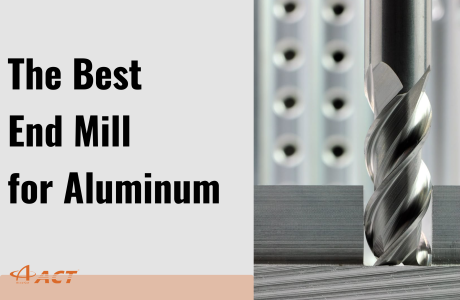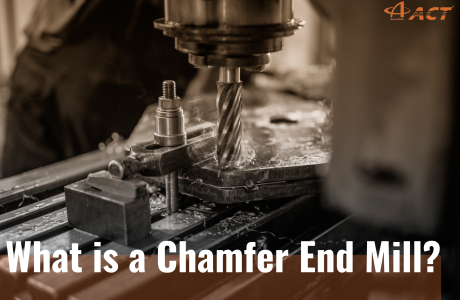In today's manufacturing landscape, CNC machines play a crucial role in producing precise, high-quality parts efficiently and consistently.
Whether you're crafting small components or working on large projects, understanding the main parts of a CNC machine is key to success.
This article is designed to introduce beginners to the essential components and their functions, helping you gain the confidence needed to handle CNC projects with accuracy and ease.
By learning the basics, you'll be better equipped to troubleshoot, optimize performance, and achieve better results.
What is CNC Machine?
Before diving into the details of these parts, it's important to understand what a CNC machine actually is.
A CNC (Computer Numerical Control) machine is a tool used in manufacturing that operates based on programmed instructions.
Unlike traditional NC machines, which require hands-on control, CNC machines follow a set of digital commands (known as G-code) to perform tasks with precision.
These machines can cut, drill, mill, and shape materials like wood, plastic, and metal. The main advantage of CNC machines is their ability to automate complex processes, ensuring consistency, accuracy, and efficiency in mass production.
Learn More: What is CNC Milling?
CNC Machine Components
Control Panel
The CNC machine's control panel acts as the central hub for all machine operations. It allows operators to manage and adjust key parameters like spindle speed, feed rate, and toolpath execution.
The panel usually consists of a display screen and various buttons or dials for controlling axis movements, selecting tools, and running preset programs.
Some advanced models even feature touchscreen interfaces, making it easier to interact with complex functions.

Display Unit
The display unit is the screen on a CNC machine that provides real-time feedback about the operation. It shows data such as tool coordinates, spindle speed, feed rates, and error messages.
In many systems, the display unit may also show graphical representations of the part being machined to provide a more intuitive way to monitor operations.
Input Device
The input device on a CNC machine is what you use to enter commands or programs.
This could include a keyboard for manual inputs, a USB drive for loading G-code files, or even a mouse or touchscreen for navigating through the control panel options.
Machine Control Unit (MCU)
The machine control unit (MCU) is the "brain" of the CNC machine.
It processes the instructions from the program (like G-code) and sends signals to the machine's motors and tools to carry out the operations.
Feedback System
The feedback system in a CNC machine is what keeps everything on track.
It uses sensors to measure things like tool position, speed, and machine performance in real time. If there's any deviation from the programmed path, the feedback system sends corrections to ensure the machine stays precise.
This way, the machine can automatically adjust if something starts to go wrong during operation.
Footswitch or Pedal
A footswitch or pedal provides hands-free operation for certain commands, such as starting or stopping the machine, or controlling coolant flow.
It's especially helpful when the operator needs to manage the machine while handling tools or materials, allowing for quicker and safer adjustments without reaching for buttons on the control panel.
Driving System
A CNC machine's driving system includes the motors and mechanical components that control the movement of the machine's axes.
It's what makes the tool or the workpiece move in precise directions, whether it's along the X, Y, or Z axis. The driving system converts the electrical signals from the machine's controller into physical motion to ensure smooth and accurate operations during machining.
Machine Tools
Machine tools in a CNC machine are the parts that actually cut, shape, or drill the material. Common examples include cutting tools like end mills, drills, and lathe tools.
These tools are controlled by the CNC system to follow programmed paths and create parts with great accuracy and consistency.
Learn More: How to Choose the Right End Mill for Your Projects?
Headstock
In a CNC machine, especially in a lathe, the headstock is the part that holds the spindle, which in turn holds and rotates the workpiece.
The headstock provides the driving force to spin the material, allowing the cutting tools to shape or cut it as needed. It's a crucial component for operations that require precise rotation, like turning or threading.
Bed
A CNC machine's bed is the heavy, rigid base on which all other components are mounted.
It provides stability and support for both the workpiece and the cutting tools. The machine bed also helps absorb vibrations during operation, which is important for maintaining precision in the machining process. It's designed to be extremely flat and durable to ensure long-lasting performance.
Chuck
A chuck is a clamping device used to securely hold the workpiece in place during operations like turning, milling, or drilling.
It typically has jaws that can be adjusted to fit different sizes of material, ensuring that the workpiece stays stable as the machine rotates or moves it for precise cutting.
Spindle
A CNC machine's spindle is the rotating component that holds either the cutting tool (in mills) or the workpiece (in lathes).
It provides the speed and power needed to perform operations like cutting, drilling, and milling. The spindle speed and rotation direction can be adjusted depending on the material and the machining task.

Tailstock Quill
A tailstock quill is the movable part of the tailstock in a CNC machine, often used in turning operations.
It slides in and out of the tailstock to hold tools like center drills or to provide support for the workpiece, especially when working with long or flexible materials.
The quill ensures that the workpiece remains stable and aligned during machining, helping to prevent vibrations and improve accuracy.
About ACCU-CUT
Accu-Cut, based in Taiwan, is dedicated to quality and innovation in cutting tools. Our tools are crafted with premium materials and feature expertise in unique coatings.
We exclusively incorporate AlTiCrN coating, enhancing toughness, durability, and cutting ability. This commitment ensures our tools deliver superior results while providing optimal equipment protection.
At Accu-Cut, we are committed to delivering tools that not only excel in performance but also redefine precision and durability, setting new benchmarks in the industry.



